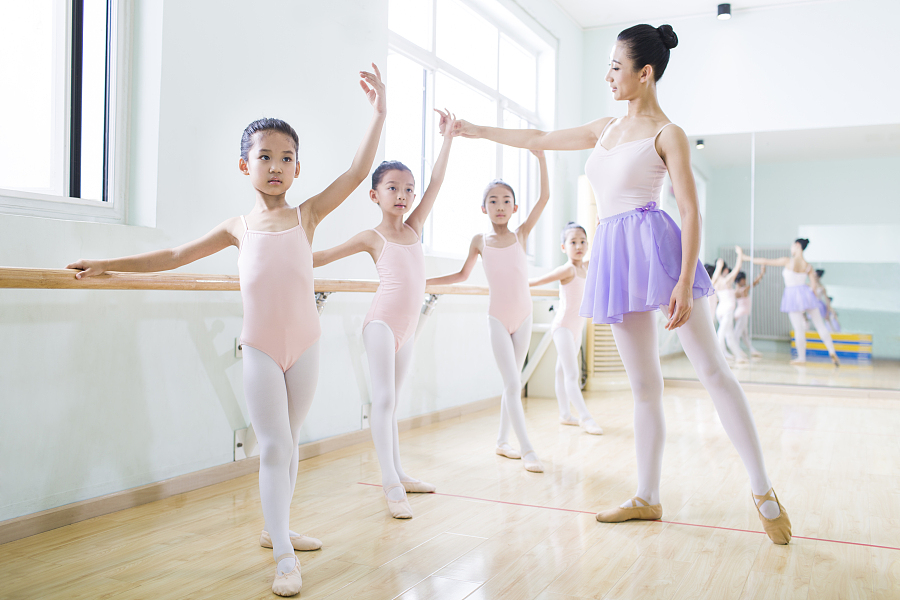More than 80 percent of Chinese parents have made arrangements for their young children during summer vacation, with extracurricular classes and travel their top choices, a recent survey found.

A young dancer teaches little girls ballet moves. (Photo: VCG)
The survey, conducted by the parenting channel on qq.com and Penguin Fairytale, an open content platform for kids, collected 10,410 samples from 28 cities.
More than 72 percent of the respondents had their children take extracurricular classes and about 50 percent had their children go on a trip, according to the survey.
Among the respondents, 64.5 percent have only one child. More than half of the respondents' children are pre-school age, and 38.3 percent are in elementary school.
When asked about the purpose of after-school tutoring, 66 percent of the parents said they want their children to adapt to this learning environment from a young age and 27 percent said they are afraid their children will be left behind by their peers if others take such classes.
On the choice of extracurricular classes, parents tend to choose interest-oriented classes for pre-school children, and academic classes for elementary school age children, the survey showed.
Learning happens not just in the classroom these days; summer camps, seeing shows and exhibitions and overseas study tours are becoming increasingly common, according to the survey. Overseas study tours are especially popular among families in first- and second-tier cities.
For many families, summer vacation has become a new spending season for children's education besides the back-to-school time right before the new school year begins, the survey said.
More than half of the surveyed families spent less than 10,000 yuan ($1,422) this summer, about 20 percent spent more than 20,000 yuan, while nearly three percent splashed out more than 50,000 yuan.
The biggest chunk of family spending during summer went to children's education -- 44.7 percent, followed by 32.6 percent on daily necessities and 22.7 percent on family travel.


